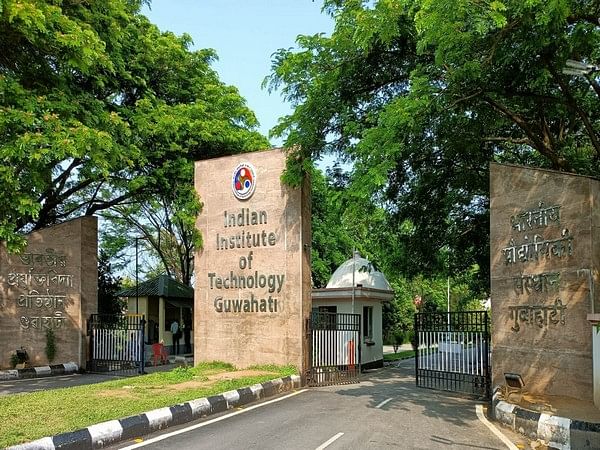Guwahati (Assam) [India], April 3 (ANI): Indian Institute of Technology Guwahati researchers have developed a new form of a semiconductor, that can be used to identify trace chemicals using a technique called Surface Enhanced Raman Spectroscopy or SERS.
The research has been led by Professor P.K. Giri, Department of Physics and Centre for Nanotechnology, IIT Guwahati. This finding can help in the development of SERS techniques that are cheaper and more reliable than existing ones.
The details of the fabrication of the 2D dendritic semiconductor nanostructures and their ability to enhance SERS signals have been published in the prestigious Nature Partner Journal – 2D Materials and Applications.
The paper has been co-authored by Tadasha Jena, Mhd. Tarik Hossain, Upasana Nath, Manabendra Sarma, Hiroshi Sugimoto, Minoru Fujii, and Prof. P.K. Giri.
Spectroscopy is a technique that analyses the interactions between light and matters to identify and characterize many types of chemicals and molecules.
There are various types of spectroscopic methods, of which SERS, is a sensitive technique that can detect extremely small amounts of various substances.
SERS studies the patterns of inelastic scattering of light (Raman scattering) by various types of materials.
At the heart of the SERS are gold or silver nanostructures – structures that are a hundred thousand times smaller than the width of a single human hair.
These nanostructures undergo a process called “electron charge oscillations” when exposed to light, which amplifies the Raman signal.
Explaining the rationale for their research, Prof. P.K. Giri, said, “The problem in using noble metal nanostructures is that they are costly, have poor environmental stability and poor reproducibility of detection. Semiconductors – materials that have electrical conduction properties intermediate to metals (conductors) and insulators – are being studied as alternatives to metal nanostructures.”
“This is because they offer better chemical stability, a wider range of options, and lower cost than noble metal SERS substrates. However, the signal amplification in semiconductors is much lower than that of metal nanostructures,” Giri added.
The IIT Guwahati team designed an ultrathin two-dimensional (2D) dendritic nanostructure of the semiconductor, palladium di-selenide (PdSe2) and found that it exhibits high SERS amplification properties.
They used a method called Chemical Vapour Deposition (CVD) to produce these structures.
The researchers used the semiconductor-based SERS technique to detect minuscule amounts of a dye called Rhodamine-B deposited.
They tested the semiconductor-based SERS over many months, and found no deterioration of performance, showing that these substrates are more stable than metal-based ones.
Explaining further details of their work, the lead researcher said, “We have also shown by computational studies that the 2D-dendritic structures having line defects and nanopores can have metal-like behaviour, which is further supported by multi-path charge transfer processes. Both of these contribute to enhanced amplification of the Raman signal.”
SERS is useful for the detection of trace amounts of chemicals in various situations – pollutants in water, biomarkers in blood, etc.
The researchers further report that cost-effective dendritic 2D PdSe2 can replace the costly metal-nanoparticle-based plasmonic SERS substrates. (ANI)
This report is auto-generated from ANI news service. ThePrint holds no responsibility for its content.



